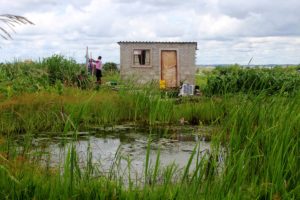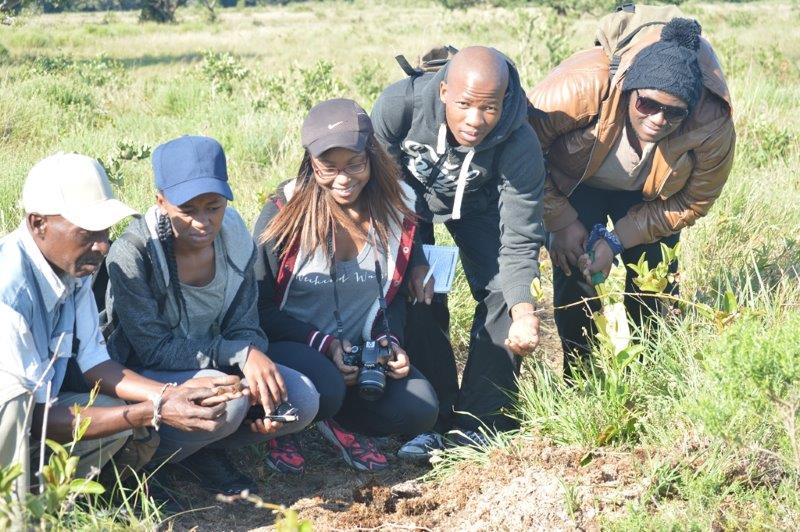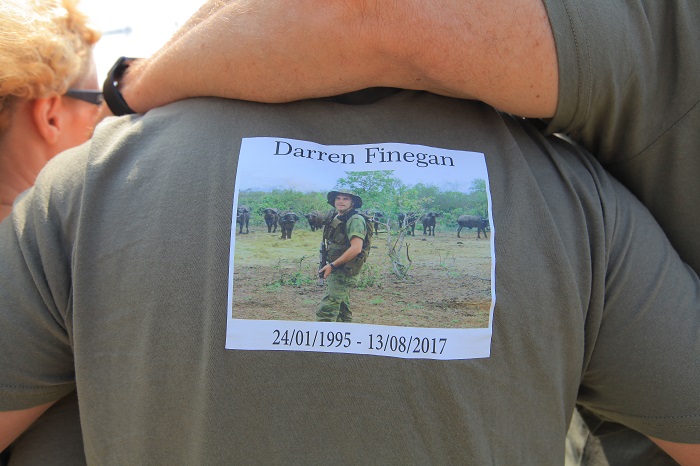It’s the poor and working class who suffer most from high-handed and selective solutions to illegal building on swamps.
By Lemuel Chekai for Roving Reporters
First published by the Daily Maverick
Piles of rubble, with here and there the twisted steel of a door or window frame protruding – all that remains of about 100 homes after the wrecking crew called.
Chiwoniso Shoko, whose house in the high-density Harare suburb of Budiriro was among those razed, remembers the rainy summer morning well.
“There was hardly any notice. We were still asleep; it was the noise and rumble of approaching bulldozers that woke us up,” she said.
A widowed mother of three boys, Shoko had been in the process of building the home. Two of its seven rooms were complete and the family were occupying these while the rest had reached window height.
The demolitions began at 9am on December 8, 2020, and were over by 3pm, executed on the orders of the Harare City Council.
Illegal building has decimated wetlands in the Zimbabwean capital.
According to the Harare Wetlands Trust, a non-governmental organisation, Budiriro, some 22km from the city centre, had lost 49% of its wetland hectarage, or 237ha, between 2008 and 2019. Harare as a whole lost 50% or 784ha over the same period.
The consequences were serious.
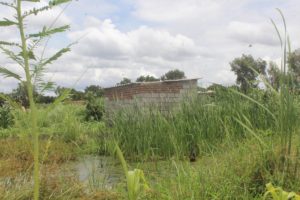
City water infrastructure, initially designed to serve 300,000, was buckling under the strain of a population that has swelled to more than two million. And with climate change thought to be affecting rainfall patterns, wetlands have become increasingly important to the wellbeing of residents.
Apart from reducing flooding and providing rain catchment areas that feed rivers and lakes, Harare wetlands allow water to seep into the ground, recharging the water table. Boreholes, which tap this underground water, were now Harare’s primary water source.
In recent years, the council has taken a tougher line on “illegal structures” that have mushroomed on the city’s wetlands. It accused “bogus land developers” of grabbing and parcelling out land in open spaces, including wetlands, that had been preserved in a natural state for ecological or national value.
But the city’s handling of the problem has drawn sharp criticism.
It sent the bulldozers to Budiriro at the peak of the rainy season, leaving Shoko and her boys, aged 6, 10 and 14, out in the open. They scrambled to put up a makeshift, zinc-sheeted shelter that now stands on the ruins of their old home. The crude structure was all that remains of US$11,500 Shoko poured into the project, the equivalent of six years’ salary for an average government employee in Zimbabwe. Some US$7,000 of this– part of a benefit pay-out from her late husband’s employer – went on acquiring the land, a 300-square-metre residential stand, in 2016. The balance, which she earned as a small-time cross-border trader, paid for the building work.
Shoko’s neighbours suffered similar heartbreak and most now live in shacks or temporary shelters amid the rubble too.
The widow said she had been a little skeptical when she acquired her plot, but said a representative for the developers, Masimba Cooperative, reassured her that all was well, pointing to other settlements in the city built on wetlands.
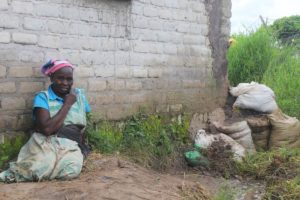
Numerous efforts to get a comment from the cooperative owner, Regynald Masimba, proved fruitless. In the past he has declined discussing the matter with the media.
Shoko said she had been unaware of the importance of wetlands at the time and accused the council of double standards.
She pointed out that 10 minutes’ drive from her ruined home stands a flourishing settlement built on top of a wetland in Belvedere, a middle-class residential area.
“Since the incident occurred I have always been wondering to myself, are wetlands only found down here in the high density suburbs,” said Shoko during a stroll in a rubble-strewn field, her hands behind her back in a posture evident of distress.

The Harare Wetlands Trust confirmed that Belvedere has lost 36% of its wetland area from 2010 to 2019, yet not a single eviction notice has been served in almost 10 years.
Selestino Chari, the trust’s programmes manager, was adamant that building on wetlands broke the law, but questioned what he views as the arbitrary and high-handed way the council enforced its laws.
“(It) feels it has the jurisdiction to save or destroy the ecosystem. Occupied wetland spaces in the (relatively affluent) low density suburbs were parcelled out by the city council so they can’t drag themselves to court in order to reclaim the spaces.
“But in the high density suburbs, land barons are widely responsible for wetland occupation and in cases like such, the council is never slow in taking matters to court for demolition orders.”
However, Harare mayor Jacob Mafume – who is currently suspended amid political wrangling at city hall, but was in charge when the demolitions were carried out – insisted there had been no favouritism.
“We never favoured anyone. The list may have only implicated those areas because Harare has more high density settlements than low,” Mafume said.
The Harare city council was approached for comment but had not responded at time of publication.

But Chari said, in the past decade at least 15 wetland sites had been given over to housing in Harare’s low density suburbs and satellite towns and the local councils had failed to act against this. He said this sustained a view that the demolitions sprang from frustration that it was not benefiting from the sale of the land, rather than from any will to save wetlands.
“It takes a neutral party, like our organisation, or a complaint by residents for an issue of wetland occupation in low-density suburbs to be discussed.”
The trust said it had more than 25 cases in court against the council and housing cooperatives, on the legality of certain settlements and three-quarters of these involved houses in Harare’s low-density suburbs. However, the cases have dragged on since 2014 and no action has been taken.
Gift Kurupati, secretary-general of the Chitungwiza Progressive Residents’ Association, a not-for-profit organisation that represents ratepayers and tenants in Chitungwiza, a dormitory town 25km south of central Harare, is critical of the role played by the national authorities.
“What worries us as residents is that regulatory authorities like the Environment Management Agency always talk about wetlands that are occupied by the poor. If it pertains to (affluent) areas like Longcheng (shopping centre) in Belvedere, Nyaradzo Funeral Services in Chitungwiza and the Old Mutual shopping mall in Chitungwiza nothing is said,” said Kurupati.
He said they and other individuals and organisations, including the Combined Harare Residents’ Association, had tried to stop development on wetlands in Belvedere but to no avail.

Mfundo Mlilo, a former director of Combined Harare Residents’ Association, said: “We tried to dispute the continued development of the area through court applications and letters to various responsible offices but a paper came from the government describing it as a product of national importance.”
While the rich were seemingly at liberty to break environmental laws, including the Environmental Management Act and gazetted notices, the effects of wetland occupation were hurting the poor.
A stroll in any of the low-density neighbourhoods reveals that almost every household has sunk a borehole of its own. But private boreholes were a luxury few in Harare’s high-density suburbs could afford. At any time of the day women and children can be seen queuing at the communal borehole points which each serve a radius of 1-2km as the council’s water facilities fail to keep pace with an ever-swelling population.
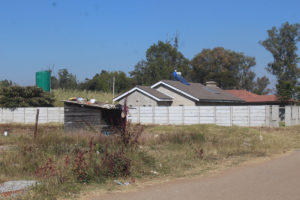
President Emmerson Mnangagwa in February said he had tasked a team to identify and develop alternative spaces to relocate families whose homes were built in wetlands and other undesignated areas. But nearly 10 months on and nothing has materialised.
Shoko would like to take the president at his word but has her doubts. “So for now, while we wish for this to materialise, we are not expecting too much,” she said.
In January, the Harare City Council announced that more than 30,000 illegal structures, mostly homes in high-density suburbs, were set to be demolished. This was in addition to about 11,000 homes in Chitungwiza earmarked for bulldozing, as the city fathers pursued a programme to turn the capital into a “world-class city” by 2025.
The programme, which was launched in 2012, counts among its goals the creation of well-oiled, co-ordinated and functional infrastructure with abundant opportunities for the city’s people.
In 2005, the then Robert Mugabe government launched Murambatsvina, a campaign to clear slums across the country. Estimates put the number of people it displaced at between 64,000 and 323,000, with the economic fallout affecting up to 2.5-million people.
Murambatsvina appears to have been politically fuelled, with critics of the government viewing it as a way of punishing the urban populace for voting for the opposition. The wetland demolitions appear to be motivated more directly by money. – Roving Reporters
- Lemuel Chekai, a 26-year-old freelance writer based in Harare, is a participant in the Young African Journalists Accelerator Programme which focuses on climate issues. This article, first published by Daily Maverick, forms part of Roving Reporters biodiversity reporting project supported by Internews Earth Journalism Network.
This story is free to republish provided the article is used without any change to the text. It must also include Roving Reporters story byline, picture credits and the footnote above.
